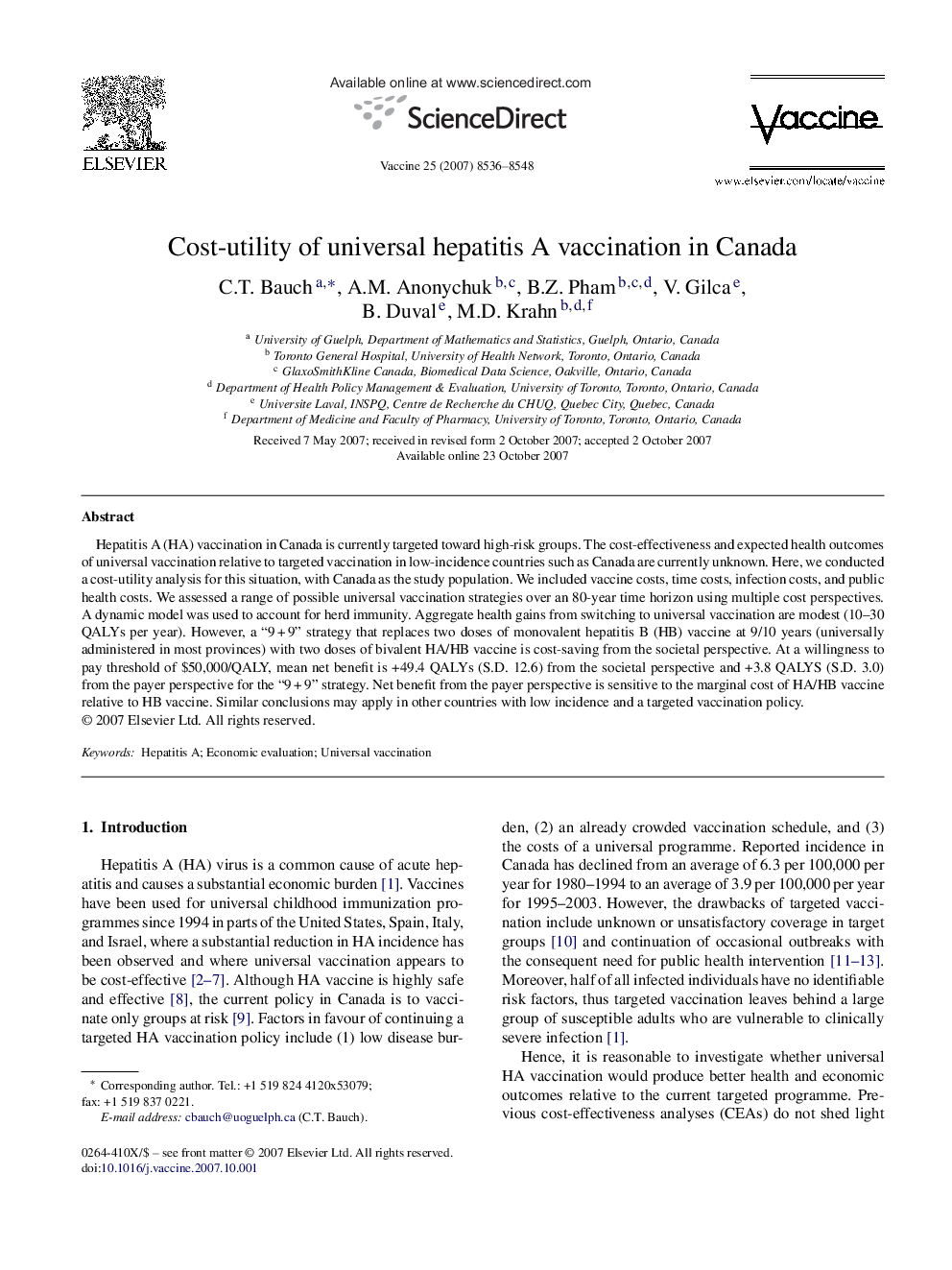| Article ID | Journal | Published Year | Pages | File Type |
|---|---|---|---|---|
| 2408622 | Vaccine | 2007 | 13 Pages |
Hepatitis A (HA) vaccination in Canada is currently targeted toward high-risk groups. The cost-effectiveness and expected health outcomes of universal vaccination relative to targeted vaccination in low-incidence countries such as Canada are currently unknown. Here, we conducted a cost-utility analysis for this situation, with Canada as the study population. We included vaccine costs, time costs, infection costs, and public health costs. We assessed a range of possible universal vaccination strategies over an 80-year time horizon using multiple cost perspectives. A dynamic model was used to account for herd immunity. Aggregate health gains from switching to universal vaccination are modest (10–30 QALYs per year). However, a “9 + 9” strategy that replaces two doses of monovalent hepatitis B (HB) vaccine at 9/10 years (universally administered in most provinces) with two doses of bivalent HA/HB vaccine is cost-saving from the societal perspective. At a willingness to pay threshold of $50,000/QALY, mean net benefit is +49.4 QALYs (S.D. 12.6) from the societal perspective and +3.8 QALYS (S.D. 3.0) from the payer perspective for the “9 + 9” strategy. Net benefit from the payer perspective is sensitive to the marginal cost of HA/HB vaccine relative to HB vaccine. Similar conclusions may apply in other countries with low incidence and a targeted vaccination policy.
